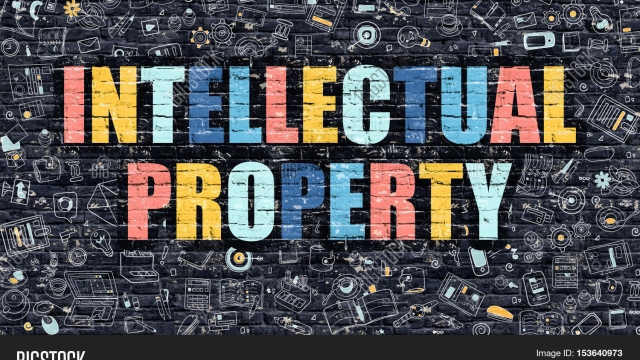
Intellectual property plays a significant role in today’s world, fostering creativity, innovation, and protecting the rights of creators and inventors. The concept refers to the intangible creations of the human mind, such as inventions, artistic works, symbols, designs, and even names. In an era where ideas hold immense value, understanding the intricacies and complexities of intellectual property is essential for individuals, businesses, and society as a whole.
At its core, intellectual property serves as a safeguard, granting exclusive rights to creators and innovators, allowing them to reap the benefits of their hard work and dedication. By providing legal protection, it encourages individuals to invest their time, resources, and expertise into the development of new ideas and inventions, fostering a cycle of innovation that drives progress forward. However, the world of intellectual property is vast and multifaceted, encompassing various forms and categories that require different legal protections.
From trademarks that protect distinctive signs and symbols of brands to patents that secure inventions and technological advancements, each facet of intellectual property offers unique benefits and challenges. Copyrights protect original works of authorship, such as literary, musical, and artistic creations, while trade secrets safeguard valuable business information. By understanding these different branches of intellectual property, individuals and businesses can navigate the legal landscape more effectively, ensuring that their ideas and creations are properly protected.
In this article, we will delve into the world of intellectual property, exploring its different forms, its importance in fostering innovation, and how it can be leveraged to support economic growth. We will also examine the challenges and debates surrounding intellectual property, such as balancing private interests with the greater good of society and addressing the ever-evolving digital landscape. Join us as we unveil the intricacies of intellectual property and discover how it shapes our world, fueling creativity and driving progress in diverse fields and industries.
Understanding Intellectual Property
Intellectual property is a broad and complex concept that encompasses various creations of the human mind. It refers to the legal rights that individuals or organizations hold over their inventions, artistic works, designs, or any other form of intellectual creation. These rights serve to protect and incentivize innovation and creativity by granting exclusive control and ownership to the creators.
At its core, the concept of intellectual property recognizes the value of ideas and intangible assets. It goes beyond physical possessions and extends to intangible creations that hold significance in our society. This includes literary and artistic works, inventions and discoveries, brands and logos, trade secrets, and more. Understanding intellectual property is crucial in today’s knowledge-based economy, as it ensures that innovators and creators can reap the benefits of their creations.
Intellectual property rights are not only about protecting the interests of individuals or organizations but also about promoting advancement and progress. By giving creators the exclusive rights to their inventions or creations, intellectual property laws encourage further innovation and provide an environment that fosters growth and development.
However, the notion of intellectual property is not without its challenges. Balancing the rights of creators with the need for access to knowledge and cultural exchange poses ongoing dilemmas. Striking the right balance between promoting innovation and ensuring public benefit is a continuous endeavor in the realm of intellectual property.
In conclusion, understanding intellectual property is essential for comprehending the intricacies of ownership in the world of ideas and innovations. It encompasses a range of intangible assets that are protected by legal rights, giving creators exclusive control over their creations. By fostering creativity and providing incentives for innovation, intellectual property plays a vital role in shaping our society and driving progress.
Types of Intellectual Property
There are various types of intellectual property that exist to protect different forms of creativity and innovation. Each type serves a unique purpose, offering legal rights and protections to their respective owners. In this section, we will explore three main categories of intellectual property.
-
Copyright:
Copyright is a type of intellectual property that safeguards original works of authorship. It grants exclusive rights to the creator in areas such as literature, music, art, and software. With copyright protection, the owner has the authority to reproduce, distribute, and publicly display their work. This ensures that others cannot use or profit from their creations without permission. -
Trademarks:
Trademarks are distinctive symbols, logos, or designs that distinguish and identify the source of goods or services. They play a vital role in branding, allowing companies to differentiate themselves in the market. With a registered trademark, a business can protect its unique identity, preventing others from using a similar mark that could cause confusion among consumers. -
Patents:
Patents primarily protect inventions and discoveries. They grant exclusive rights to the inventor, providing a monopoly on the commercial use and sale of the invention for a specific period. Patents encourage innovation by providing inventors with the incentive to disclose their inventions to the public in exchange for exclusive rights. This system helps stimulate progress by rewarding individuals or organizations for their groundbreaking ideas.
Understanding the different types of intellectual property is crucial in today’s knowledge-based society. By recognizing and respecting these legal rights, we can foster innovation, creativity, and fair competition, while also ensuring that the fruits of our intellectual endeavors are protected.
Protecting Intellectual Property
In order to safeguard intellectual property and ensure its rightful ownership, it is crucial to implement effective protection measures. These measures not only deter potential infringement but also provide legal recourse in case of any unauthorized use or misuse.
One of the key ways to protect intellectual property is through obtaining patents, copyrights, or trademarks. Patents are granted to protect inventions, ensuring that inventors have exclusive rights over their creations. On the other hand, copyrights safeguard original works of authorship, such as literary, artistic, or musical works. Trademarks, on the other hand, protect logos, slogans, or distinctive brand elements that differentiate products or services from others in the market.
Additionally, it is important to establish clear contractual agreements whenever intellectual property is involved. Contracts can outline the terms and conditions for using or licensing intellectual property, specifying how it can be utilized and by whom. This helps prevent any misunderstandings while providing a legal framework for resolving disputes, should they arise.
Furthermore, businesses can protect their intellectual property by implementing heightened security measures. This includes utilizing encryption, firewalls, and other digital security tools to safeguard electronic intellectual property from cyberattacks or theft. Physical security measures, such as surveillance systems or access controls, can also help protect tangible intellectual property like prototypes or confidential documents.
By actively and diligently protecting intellectual property, creators can ensure that their innovative ideas and creations remain their own. It not only benefits individual creators but also fosters a culture of innovation and creativity, encouraging further advancements across various industries.









